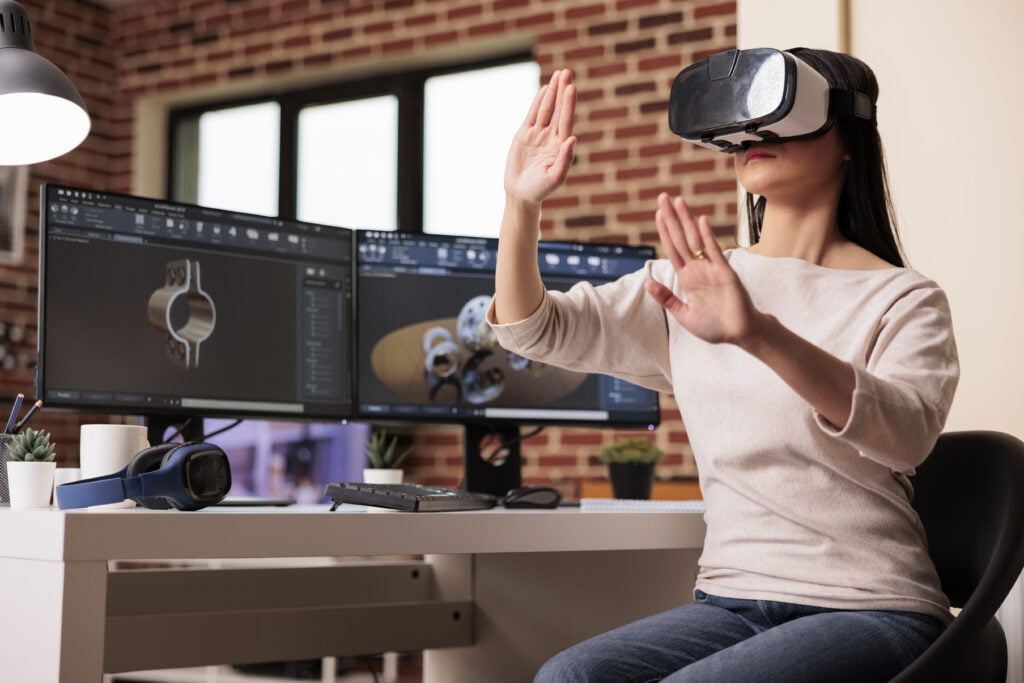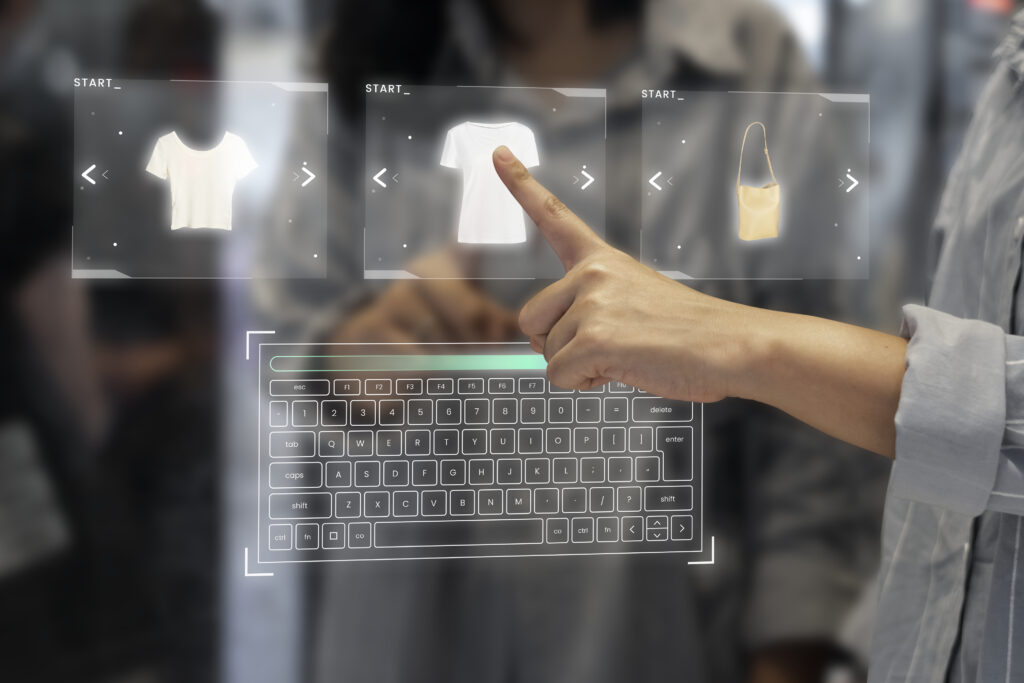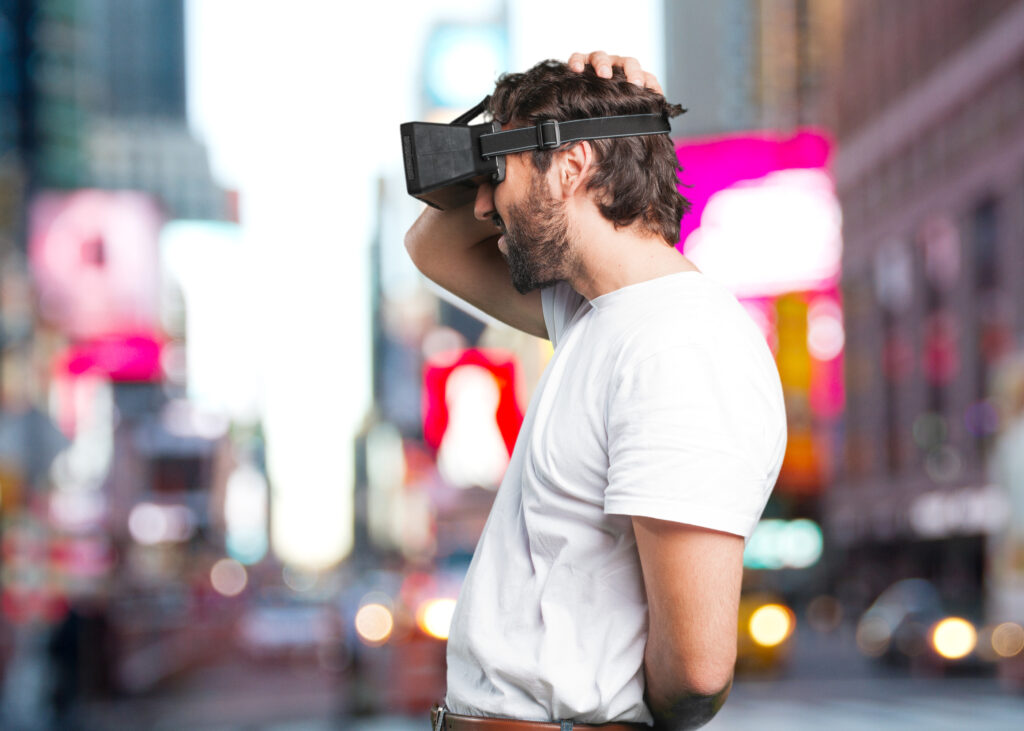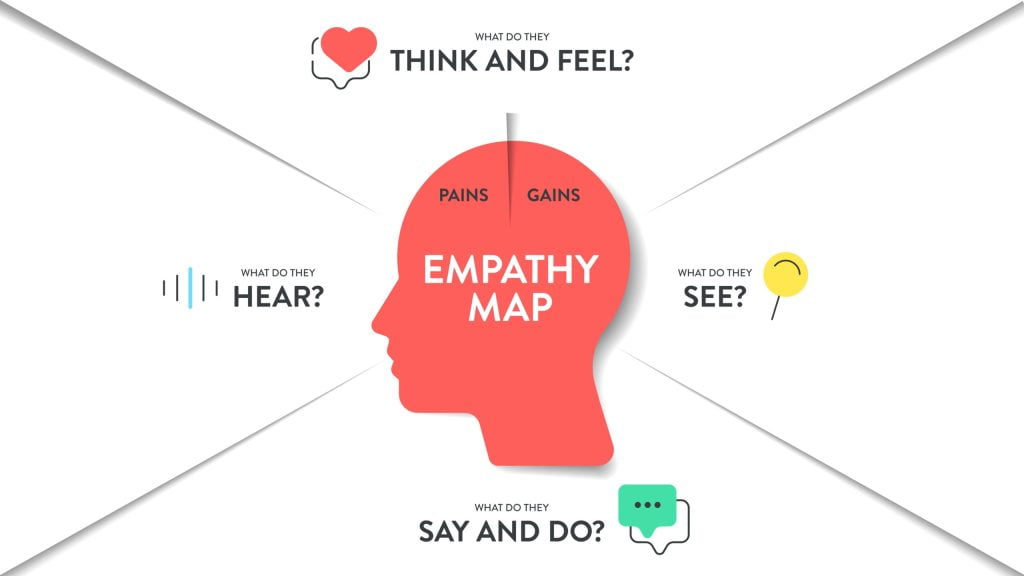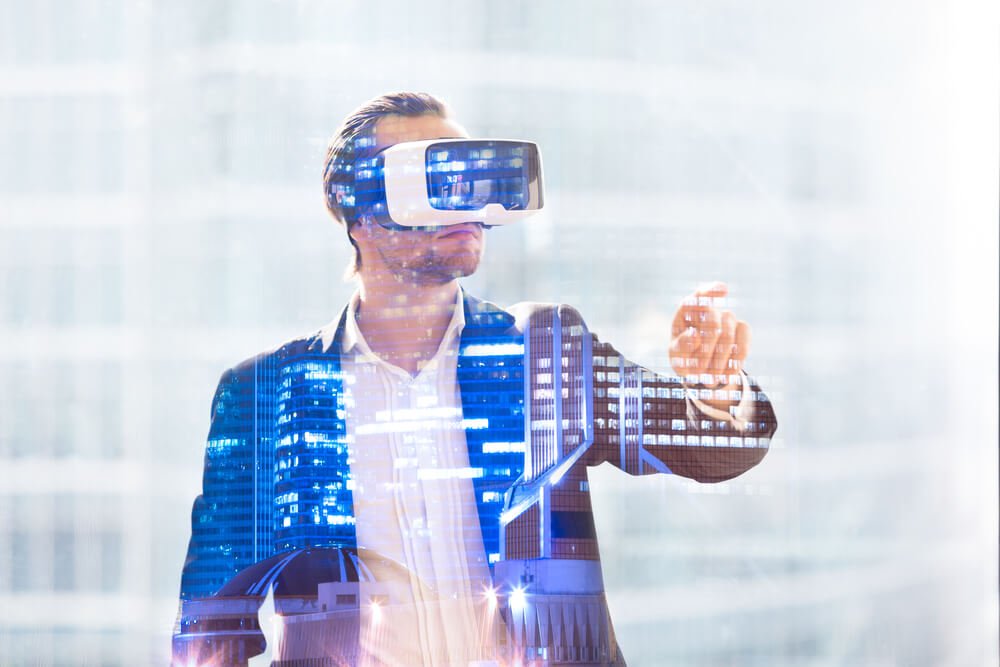Don’t let long distances hinder your business – use VR
Table of Contents:
In these strange times, we find ourselves more and more often working long-distance. As employees work from their homes, most of which are far away from each other, it gets difficult and expensive to organize meetings and conferences. Even the daily productivity of employees plummets down, as it is simply very difficult to properly focus on your tasks at home. How virtual reality can improve your business?
Virtual Reality for business – how can you improve your company with VR
There is, however, a great tool that can help diminish the negative effects of long-distance working – virtual reality! With VR, your employees can see each other, talk to each other, and interact with each other, without actually having to be present in the same room – at least not physically! Let’s go over some of the most prominent features and uses for VR in business and work environment.
It’s an amazing communication channel!
While there are certainly means of communicating over long distances that have been used for years now, none of them are even close to the effectiveness of face-to-face communication. Phone calls, video calls, and even online conferences – all of these have been proven by research to be very ineffective, with poor engagement rate and information retainment rate. Using virtual reality to hold meetings and conferences, you can let your employees immerse themselves in a simulated environment, isolated from any external distractions. Moreover, your employees will be able to feel confident and stress-free, as no longer will they have to constantly be on camera at their own homes, which makes many feel insecure and distracts them from work.
Attract new customers with virtual reality
When it comes to impact of virtual reality on business, it is not just a new communication channel, but also a new medium to present and create content. As such, it creates many new marketing opportunities, allowing you to reach new, previously unexplored audiences. Many companies have already started successfully implementing VR in B2C communication through virtual reality, and the results are very promising. A great example of that would be IKEA and its use of augmented reality to let customers place a virtual copy of their furniture inside their own homes using nothing more than a smartphone. This not only presents a great opportunity for the customers to see how the product looks without having to visit the shop physically, but it also lets the clients see exactly how it will look in their own setting!
Train your employees effectively with VR
Because of its technological advancement and tons of tools available, VR can also be effectively used for employee training. Thanks to its flexibility, VR training solutions can be implemented by virtually any industry, teaching its employees an array of skills without spending on travel expenses to bring the team together. From VR in medical training and doctors performing surgery, to military personnel training, to architects and interior designers – VR training has limitless potential in creating personalized scenarios to train in. Even astronauts use VR to simulate training situations which would not only be expensive to recreate in real life but also possibly life-threatening.
Create new products fully in VR
We have talked about VR’s use in communication and training – but can VR actually be used to create a full product? The answer is absolutely yes! Creative workers such as designers and architects can utilize the fully 3D VR environment to create new projects, without the limitations that a 2D display brings. VR can be a factor that directly influences sales. For example, a sales representative might use VR to not only connect with potential clients, but also to demonstrate the product without bringing the clients physically to the company. A car dealer might use VR to show their potential customers a vehicle, and even let them drive it – the possibilities are truly endless!
Read also: The Benefits Of Using VR As A Communication Channel For Businesses.
Author: Rafał Siejca
Rafal has over twenty years of corporate experience, including roles at Millennium Bank, Comarch, and leading software teams at PZU, one of Europe’s largest insurance companies.As one of Poland’s few true VR experts with a decade of experience, he ensures timely, high-quality project delivery as CEO and CTO.


